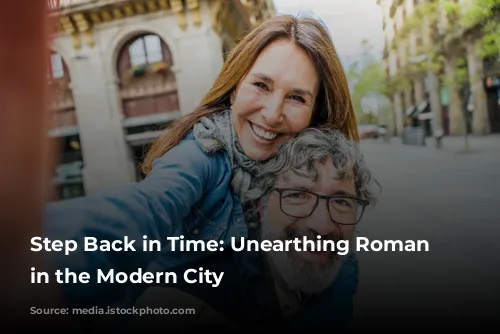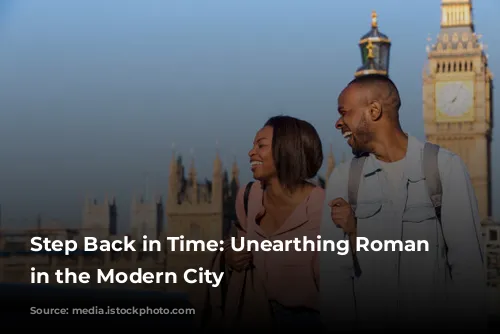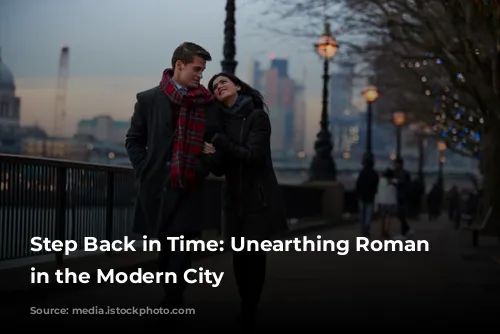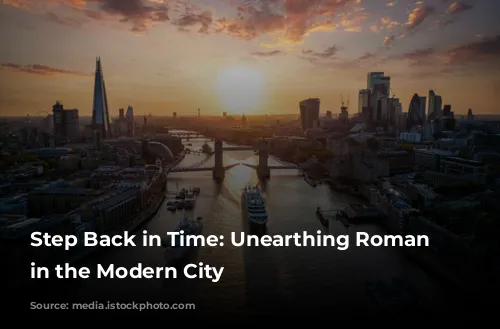Imagine strolling through the bustling streets of London, unaware that you’re walking in the footsteps of Romans who roamed the city 2,000 years ago! This captivating journey through time is possible, as the vibrant heart of London today sits atop the very foundations of the ancient Roman settlement, Londinium.
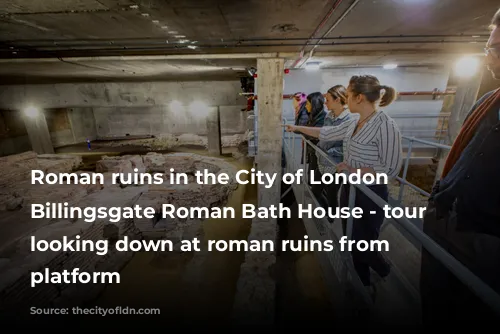
Exploring Londinium’s Legacy
(This section focuses on the historical significance of Roman London and encourages readers to explore the city’s hidden treasures.)
The City of London, with its modern skyscrapers and bustling streets, holds a rich history beneath its surface. From the remnants of the city wall to the excavated ruins of a bathhouse and amphitheater, fascinating glimpses of Roman life are scattered throughout this urban landscape.
These historical remnants whisper tales of a thriving commercial center, a bustling community, and a glimpse into the lives of everyday Romans.

Unveiling Roman Homes and Baths
(This section details a specific site of interest: Billingsgate Roman House and Baths.)
Venture into the basement of an ordinary office building, and you’ll be transported back in time to a well-preserved Roman home and bathhouse. This remarkable discovery, unearthed in 1848, reveals the daily routines of ancient Londoners. The preserved remains are so well-maintained that it feels as though archaeologists have just stepped away.
This remarkable site offers a unique opportunity to connect with the past and experience Roman life firsthand. You can explore these captivating ruins on a guided tour, available on Saturdays from April to November.
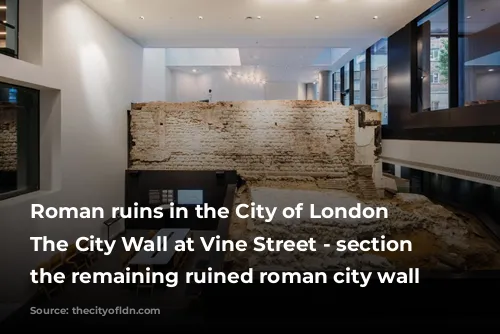
Witnessing Roman Amphitheater’s Fiery Past
(This section focuses on the Guildhall Art Gallery, where Roman amphitheater ruins can be found.)
Step into the tranquil Guildhall Art Gallery, and it’s hard to imagine the violent spectacle that once unfolded on this very spot. This location was home to a Roman amphitheater, where gladiatorial combats and public executions captivated a baying crowd. The remains of this amphitheater were unearthed during excavation work for the new gallery in 1988, providing a glimpse into the brutality and spectacle of Roman entertainment.
Today, you can explore the amphitheater’s ruins, including the entrance tunnel, east gate, and arena walls, beneath the gallery. The extent of the outer wall is marked in Guildhall Yard.

Tracing the City Wall’s Defenses
(This section highlights the remnants of London’s Roman city wall.)
As Londinium grew in importance, its need for strong defenses became paramount. In a monumental undertaking, the Romans built a two-mile long city wall, a protective ring around the thriving city. Remains of this wall are visible today, offering a glimpse into the Roman engineering prowess.
Tower Hill boasts the best preserved section of the city wall, showcasing the classic Roman construction of squared stone blocks and triple rows of red tiles. At Vine Street, a subterranean section of the wall and a bastion tower, once concealed beneath office buildings, are now visible through large windows. Since summer 2023, you can even step inside and explore these captivating ruins up close!
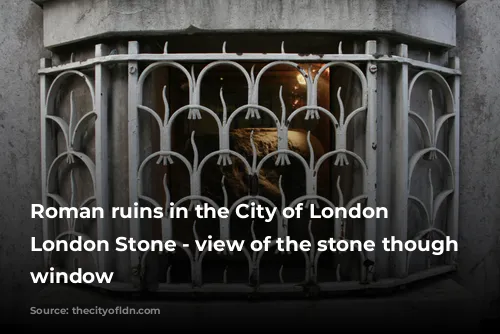
Discovering the Heart of Roman London
(This section features the London Stone and its significance.)
One of London’s most ancient landmarks, the London Stone, marks the heart of the city. Legend holds that if the stone is ever moved, London’s future will be in jeopardy. This significant piece of Roman history is safely housed in a glass-fronted enclosure at 111 Cannon Street.
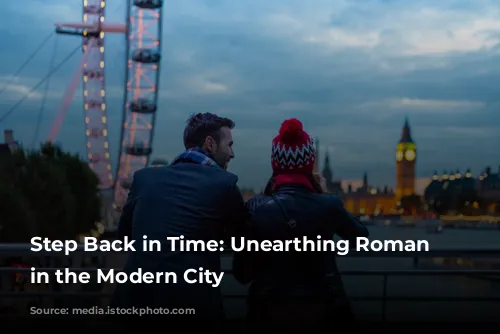
Unveiling the Secrets of the Temple of Mithras
(This section focuses on the Temple of Mithras and its immersive experience.)
Beneath the headquarters of Bloomberg, a financial news company, lies a reconstructed Roman temple. This remarkable discovery was unearthed in 1954 and reveals the importance of Mithras, the Roman god of light, in ancient London. The temple, built in the 3rd century AD, was uncovered along with intriguing artifacts like jewellery, pottery, and writing tablets, adding to the historical richness of the site.
The Temple of Mithras, now known as London Mithraeum Bloomberg SPACE, offers an immersive and multi-sensory experience, bringing the temple ruins and unearthed artifacts to life.

Exploring Roman London’s Domestic Side
(This section focuses on the Roman remains found in All Hallows by the Tower church and St Bride’s Church.)
Delve into the Crypt Museum of All Hallows by the Tower, and you’ll discover fragments of a Roman tessellated floor and a plastered wall of a 2nd century domestic house. This glimpse into a Roman home offers a window into the daily lives of Londoners 2,000 years ago.
St Bride’s Church also holds remnants of Roman history. In its crypt, you can explore a Roman pavement dating back to AD 180 and a collection of Roman artifacts discovered on the site. These remnants connect the church’s history with the city’s Roman roots.
The journey through time in London isn’t just about grand ruins and archaeological marvels; it’s about discovering the enduring legacy of Roman London in the fabric of the city we know today. From the bustling commercial centers to the quiet corners of historic churches, the echoes of the Romans reverberate throughout the city. Take the time to explore these hidden treasures and let them transport you back to a fascinating era.
